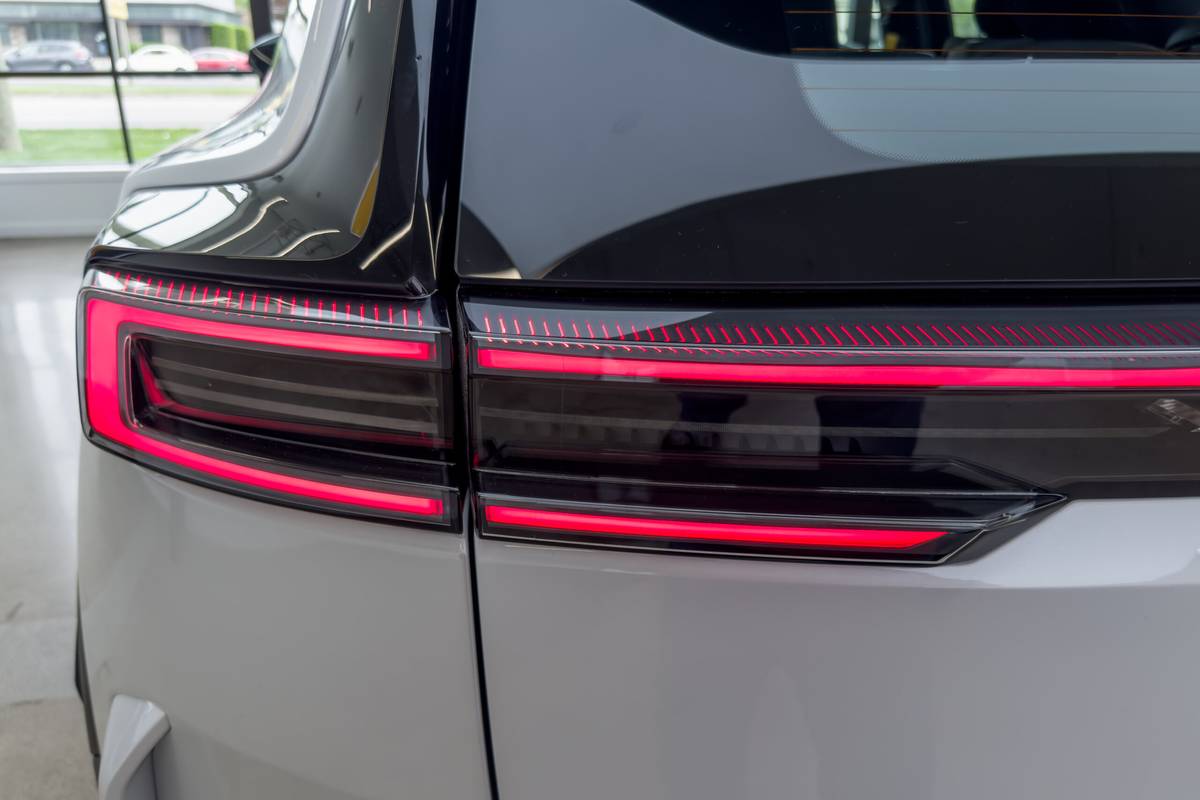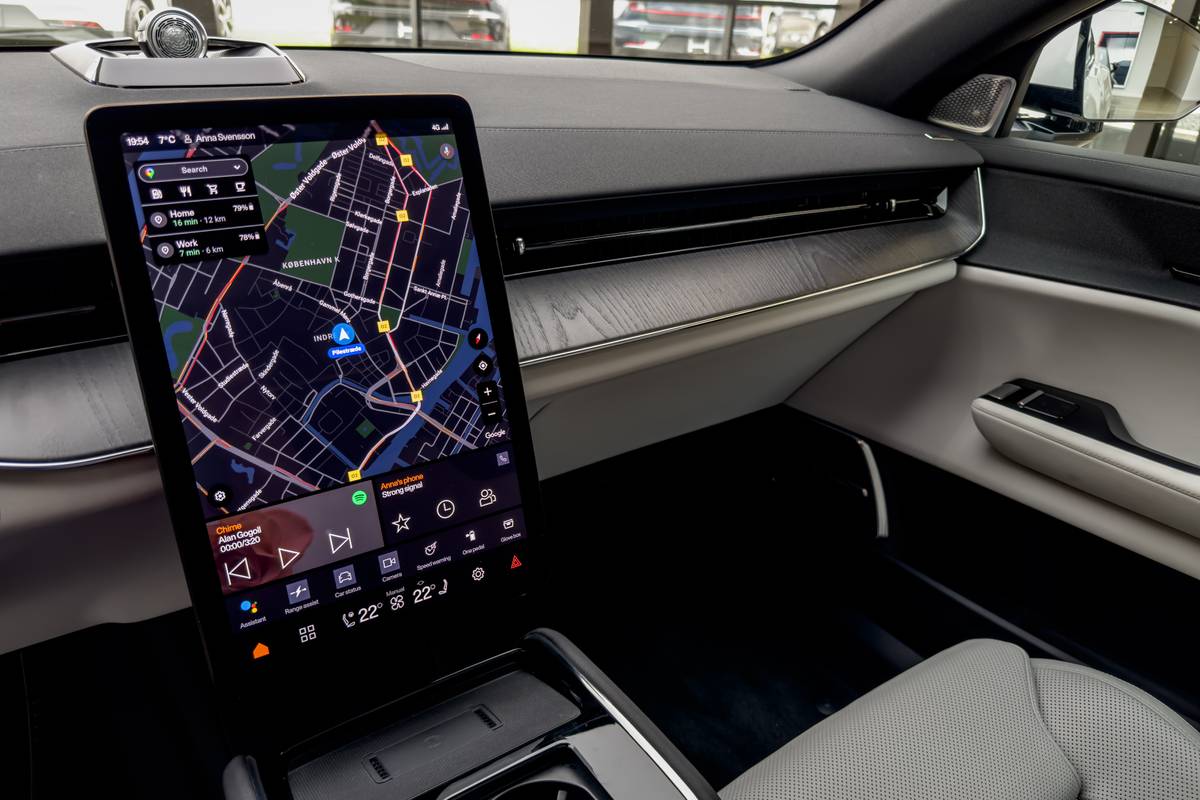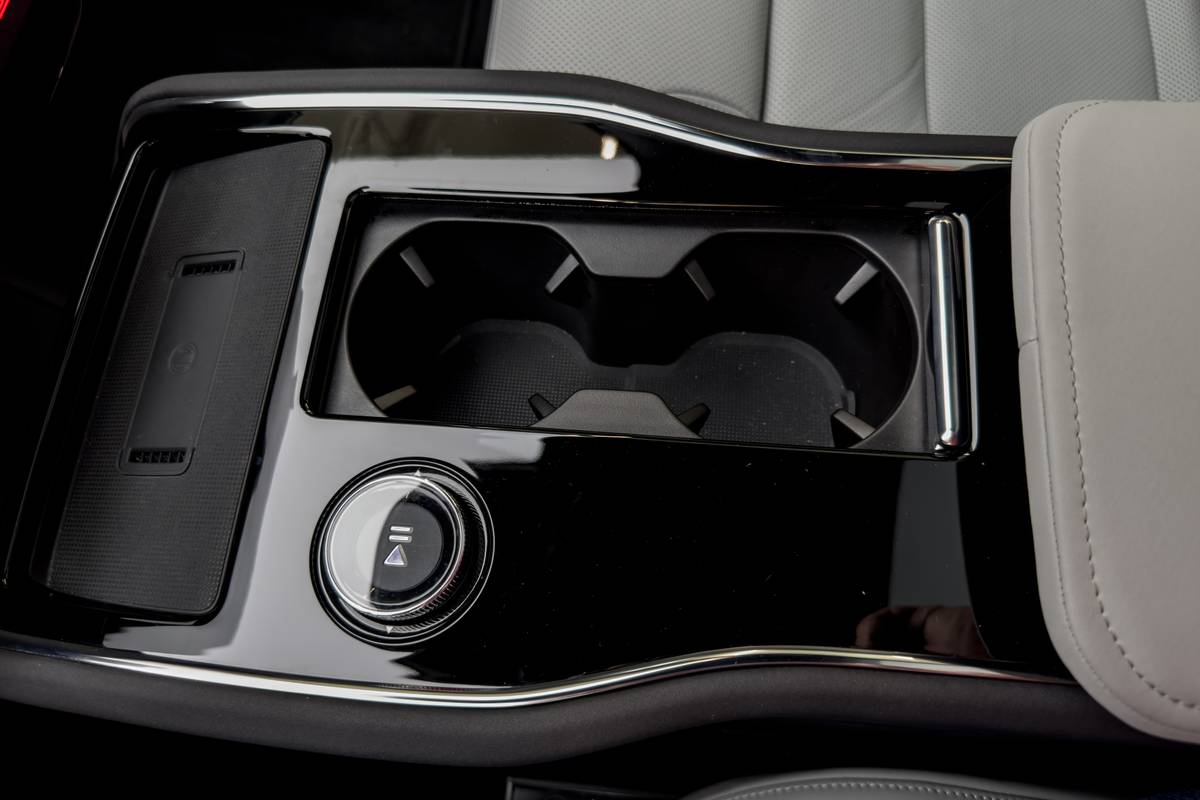The 2024 Polestar 3 SUV debuted late last year and arrives sometime late next year (it’s been delayed by software development issues, according to various reports). I was able to see and sit in an early production-representative prototype at a Polestar dealership in suburban Detroit recently. From my brief exposure to the new all-electric SUV, drumming up interest shouldn’t be hard — it represents an excellent next step from the Polestar 2 and should provide some very interesting competition for vehicles like the Tesla Model Y and Genesis Electrified GV70.
Related: 2024 Polestar 3 SUV Debuts With 300-Mile Range, Up to 517 HP
Styling’s Never Been a Polestar Problem
One aspect of Polestar’s lineup that has generally been well received by the public is styling: it’s sleek, modern and very Scandinavian in its cleanliness and minimalism. The Polestar 3 continues that tradition, adding in some additional visual flair in the front and back ends that hints at the company’s Volvo origins but creates something very different from that brand’s corporate look. This is a visually larger vehicle than a Polestar 2, with a width to it that helps create a sense of presence that’s undeniable. The 3 is definitely good looking, with an actual two-box SUV profile instead of a drooping rear end that makes it look like an overinflated sedan with far more style to it than a Model Y.
My only issue with the new Polestar 3’s styling is the one I have with the Polestar 2: The brand seems to only want to offer it in grayscale. There are no exciting or interesting colors coming for the Polestar 3; if you want any sort of actual paint color that isn’t a variation of gray, you’re going to have to invest in a vinyl wrap or get a paint job after you take delivery. The color palette as it stands is a snoozefest.
An Interior Upgrade
Inside the Polestar 3, you’re met with a lot more room than the 2 — at least up front. The added width over the sedan is obvious, with a lot more hip and shoulder room for front-seat passengers and plenty of headroom. The hood’s sculpted sheet metal provides some interesting surfacing that’s visible from the driver’s seat. The view out the back is another matter, however: Thanks to the smallish windows, rear visibility ain’t great. At least there is a view out the back, though; the new Polestar 4 crossover coupe won’t even have a rear window when it goes on sale in a few years, relying instead solely on a video rearview mirror display.
Front-seat comfort is excellent, but backseat comfort could be better. The floor is high in order to accommodate the electric battery pack and the rear seats are a bit low, resulting in the traditional EV backseat knees-up riding position. Legroom is the surprise — there isn’t much. I was unable to “sit behind myself,” i.e., position the driver’s seat where I’d normally sit and then pop into the backseat comfortably. For a mid-size SUV like this, that’s surprising. Passengers in both rows will need to do a little negotiation to get adequate legroom for everyone. Cargo room, on the other hand, benefits from the larger layout, with plenty of space behind the second row of seats.
Materials quality and design has also been given some attention, as the dash, doors, seats and trim all feel like a step above what you can get in a Polestar 2. The design is an improvement, too, with a smallish gauge cluster screen behind the steering wheel but a much larger touchscreen display in the center console. I’m hoping that Polestar is adding some more available features to the gauge cluster (currently it’s not very personalizable, and it doesn’t even show things like what audio is playing).
The 3 also uses the same Google-based operating system found in the rest of Polestar’s lineup, and while I wasn’t able to fully test this system given that the car is still in its prototype phase, it looks to be about the same as current Polestar software. That’s both a positive and negative: It’s easy to use quickly but not very customizable, and we’ve found Google Built-In to be buggy in every automotive application in which we’ve tried it regardless of manufacturer or brand. Hopefully by the time the Polestar 3 arrives in showrooms, any such software issues will have been ironed out.
It Costs How Much?
When the Polestar 3 eventually gets here, it’s slated to cost $85,300 (including destination fee), which is more than many competitors including the Model Y, Audi E-Tron and Ford Mustang Mach-E but which matches up well with the BMW iX. It’s significantly more expensive than the Polestar 2 sedan, however, leaving a bit of a jump from the sedan to the SUV if you’re looking to upgrade into something bigger once your 2 lease is up.
On the other hand, the 3 is most definitely a step up from a 2 in more ways than just size. It will make more power and have a bigger battery and a longer range than the Polestar 2, according to the brand. How it stacks up against other expensive luxury electric SUVs will need to wait for a full road test, but it looks to be competitive in performance.
More from :
- 2021 Polestar 2: 7 We Like and 5 Things We Don’t
- 2021 Polestar 2 Review: Is This the Future of Sports Sedans?
- 2022 Polestar 2 Price Shrinks by $14,000, Range Grows
- Price of the Brick Going Up: 2023 Polestar 2 Adds Range, Performance, Cost
- Electric Cars With the Longest Range












